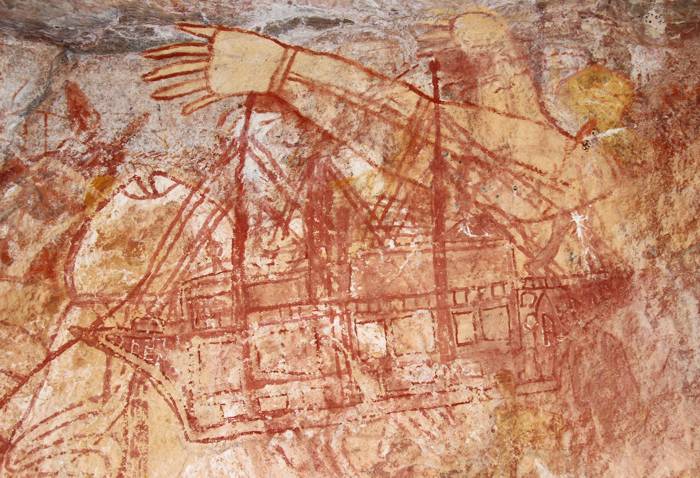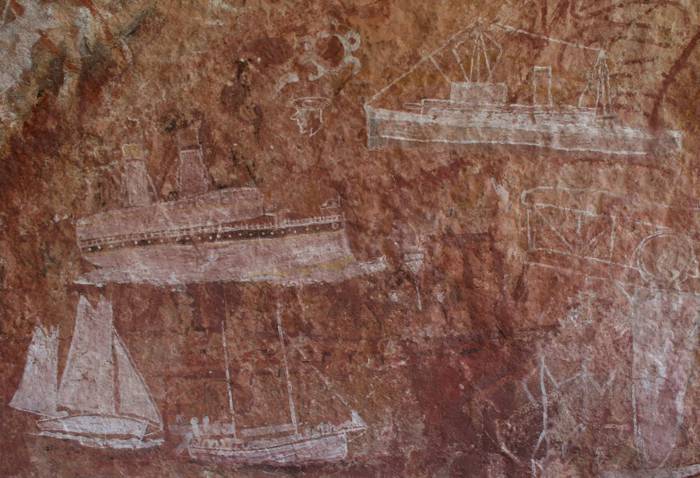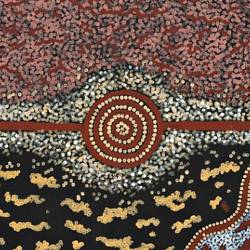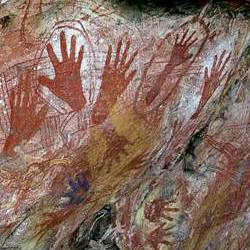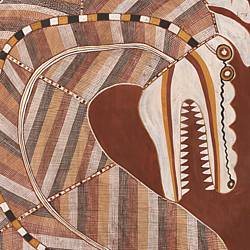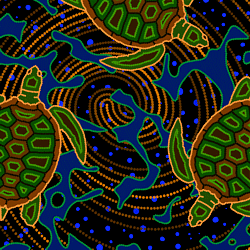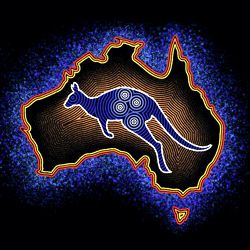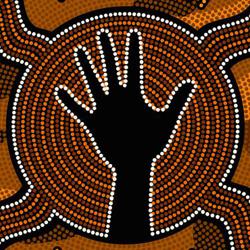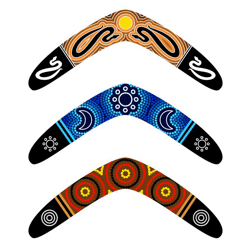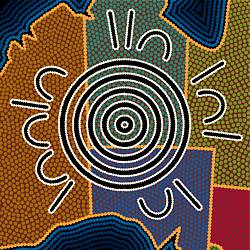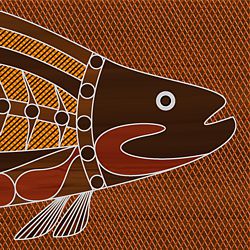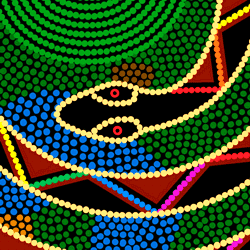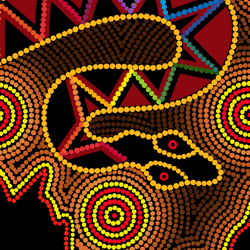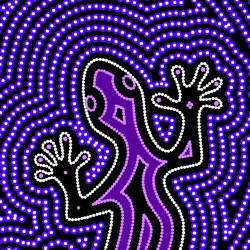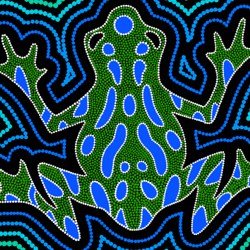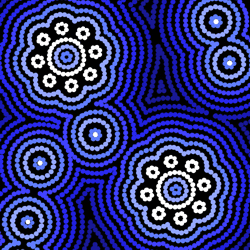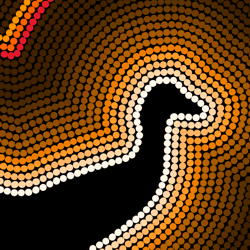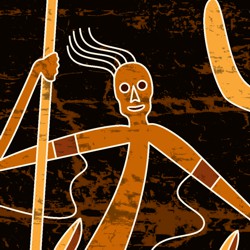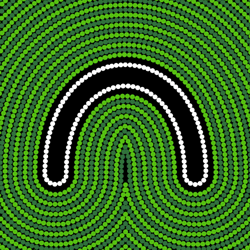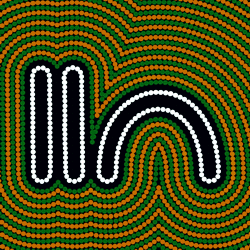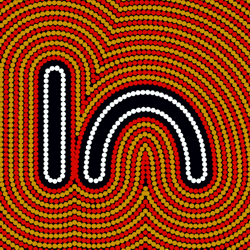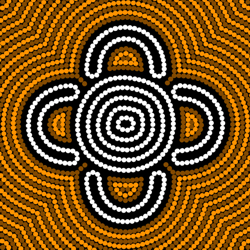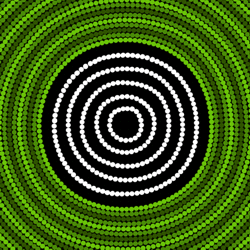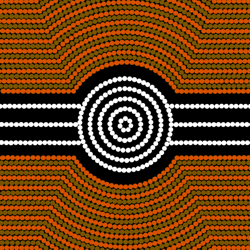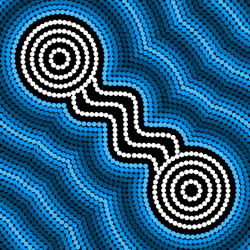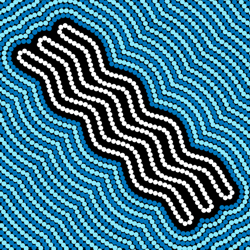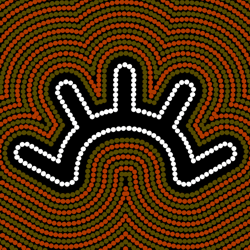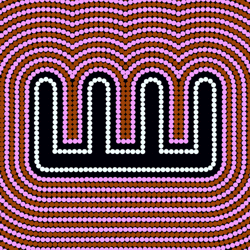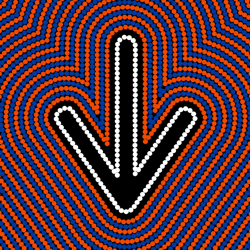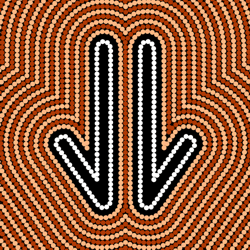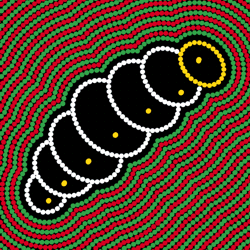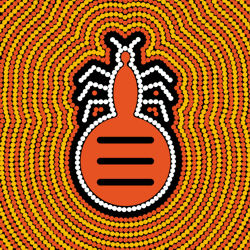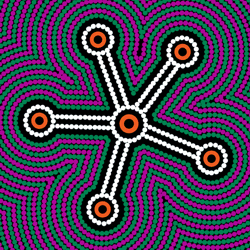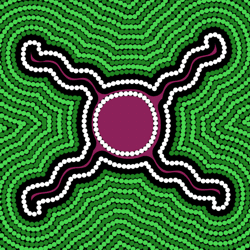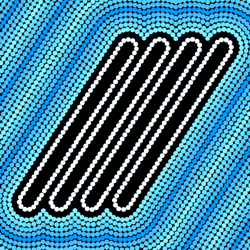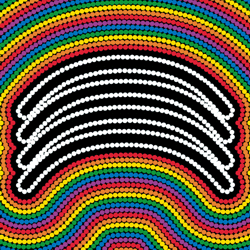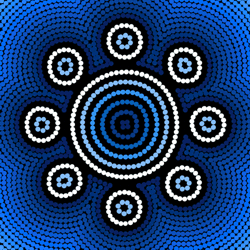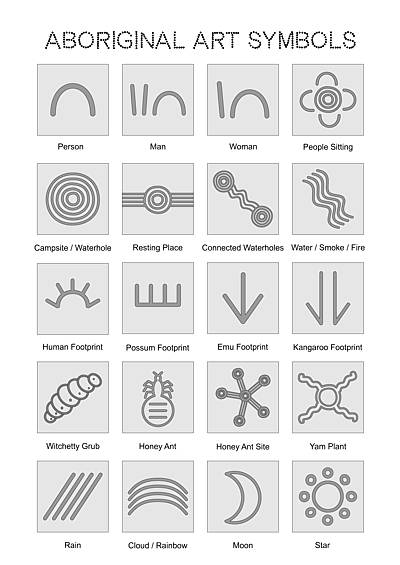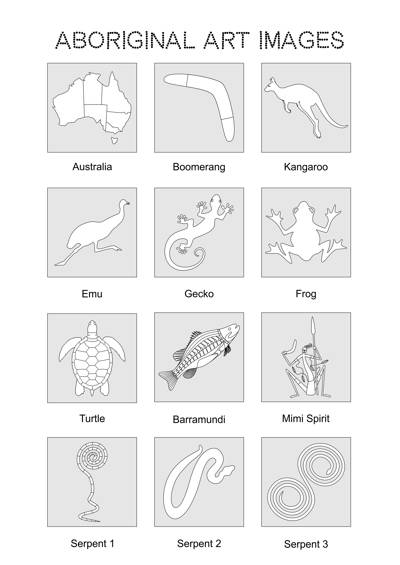Aboriginal Rock Art
Aboriginal rock art is the oldest form of indigenous Australian art with the earliest examples discovered at Gabarnmung in Arnhem Land dating back around 28,000 years. It is thought that there are over 100,000 rock art sites in Australia which provide a unique archive of indigenous art.
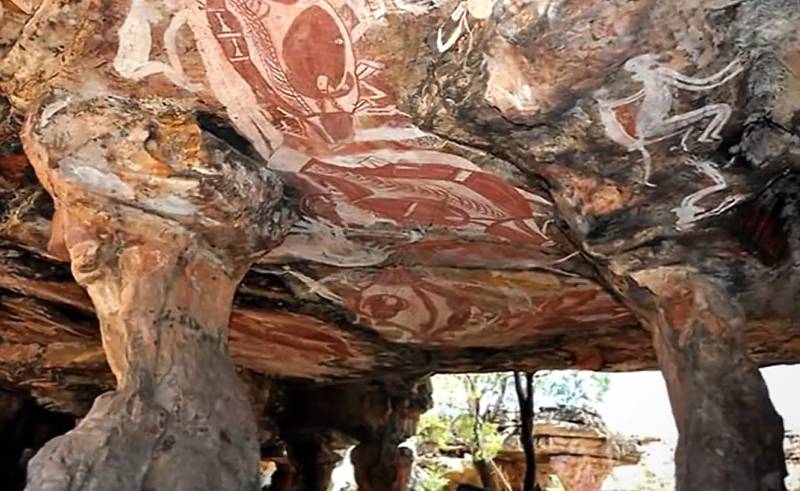
Aboriginal Rock Art
Gabarnmung, Arnhem Land, Northern Australia
Aboriginal rock art is the oldest form of indigenous Australian art with the earliest examples discovered at Gabarnmung in Arnhem Land dating back around 28,000 years. It is thought that there are over 100,000 rock art sites in Australia which provide a unique archive of indigenous art. These sites are sacred to Aboriginal Australians as they are inhabited by the spirits of their ancestors. Accordingly, they should be respected as holy places that embody the artistic, social, environmental and spiritual knowledge that is the lifeblood of Aboriginal culture.
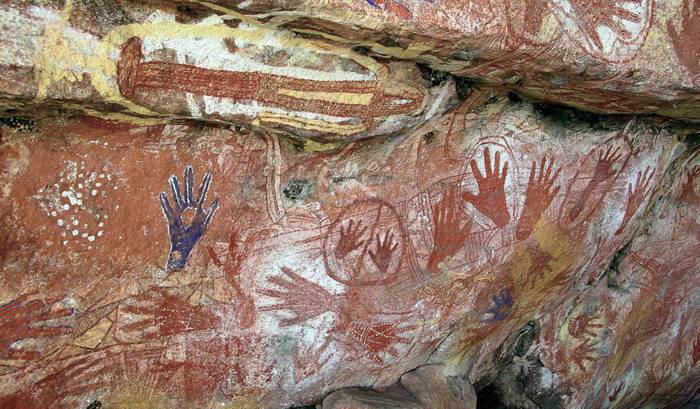
Aboriginal Rock Art - Hand Stencils
Mt. Borradaile, Arnhem Land, Northern Australia
Aboriginal rock art sites display engravings and paintings of graphic symbols, human figures, tribal ceremonies, animals, plants, and the ancestral spirits who govern the forces of nature and the cosmos.
Over the millennia the oldest examples of rock art that were created by prehistoric artists have been reworked and overdrawn by successive generations of indigenous artists up to and including the 20th century. This gives rise to an extraordinary artistic scenario where a late Palaeolithic artist begins a drawing, which is then overdrawn by a Neolithic artist, then by successive artists from the time of the Ancient Egyptians, the Ancient Greeks, the Early Christian and Byzantine eras, the Dark Ages, the Renaissance and through every stage of the art history timeline up to the modern era. If a similar phenomenon existed in Western art, it would be prized and protected for future generations. Sadly however, many Aboriginal rock sites are under multiple threats from natural erosion, pollution, vandalism, mining, developers, and a lack of general maintenance and legal protection.
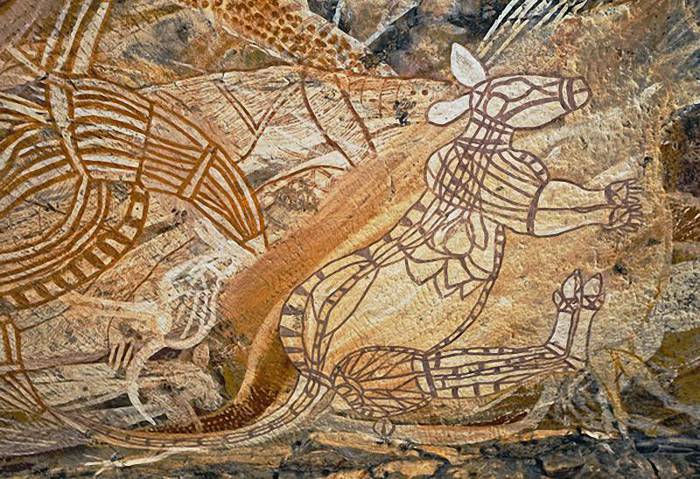
Aboriginal Rock Art - X-Ray Style
Gabarnmung, Arnhem Land, Northern Australia
The earliest rock art images communicate visual information about the Aboriginal way of life. Engraved dot rings and animal tracks are typical of the most ancient examples. At a later period, we begin to see simple paintings of animals, fish, birds and matchstick figures. Hand stencils were often used to assert tribal status or lay claim to territory. The artist would simply place their hand on the wall, take a mouthful of pigment and spray it over their hand leaving a negative imprint. Over time the imagery of rock art grew in sophistication to include more elaborate figures involved in customary activities such as hunting, fishing, fighting and trading. The depiction of animals also became more complex using a cutaway 'X-Ray style' to reveal the internal organs and musculoskeletal form of the creatures.
Aboriginal Rock Art - Paintings of Ships from Different Periods
Djulirri, Arnhem Land, Northern Australia
(click on the flip icon to view)
This 'X-Ray' style was also be applied to inanimate objects. In our photograph you can see the painting of a European sailing ship (c.1765-1813) whose side has been cutaway to reveal a cross-section of its hull. It has been painted over a giant turtle from several thousand years earlier. The image is from the Djulirri rock site, one of the best in Australia with over 3000 paintings. In some areas of the site there are up to twenty layers of images that have been built up over the past 15000 years, with some examples as recent as fifty years ago. One of the highlights of Djulirri is its paintings of ships from different ages (click on the flip icon to view). There are twenty-eight vessels in total which suggest an extensive Aboriginal contact with foreign visitors. As Djulirri is about 12 kilometres from the sea, these vessels were obviously not drawn from first-hand observation and are therefore a testament to the visual memory and skill of the artists.
Sacred Images - The Wandjina
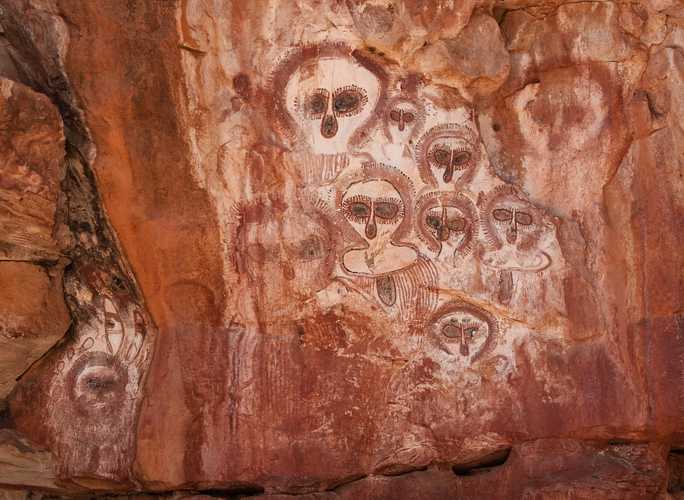
Aboriginal Rock Art - The Wandjina
Barnett River, Mount Elizabeth Station, Western Australia
Aboriginal rock art sites are sacred spaces to indigenous Australians, and they are often decorated with the images of their ancestral spirits. Paintings of the Wandjina, the creation and rain spirits of the Mowanjum Community, are found in the rock art of the Kimberley region in Western Australia. Their images first appeared around 4000 years ago when a period of monsoon rains brought an end to centuries of drought. One of their Dreaming stories tells us that they descended from the Milky Way and, together with the Rainbow Serpent, created the Earth and all its creatures. Once they had finished teaching the people the laws they should live by, they disappeared, leaving their images painted on the walls of caves and rock sites. Thereupon they entered the earth and now live at the bottom of the waterhole connected to the site of their paintings, and from there they continue to manage the creation of new life.
Over the centuries, only those artists who had been granted permission through Aboriginal law, could repaint the Wandjina images in order to recharge their spiritual energy and encourage the monsoon rains. Legend has it that any unauthorized artist who attempts to repaint their images will suffer the consequences - the Wandjina will summon up a storm to drown the lawbreaker in a flood or generate a bolt of lightning to strike him down dead.
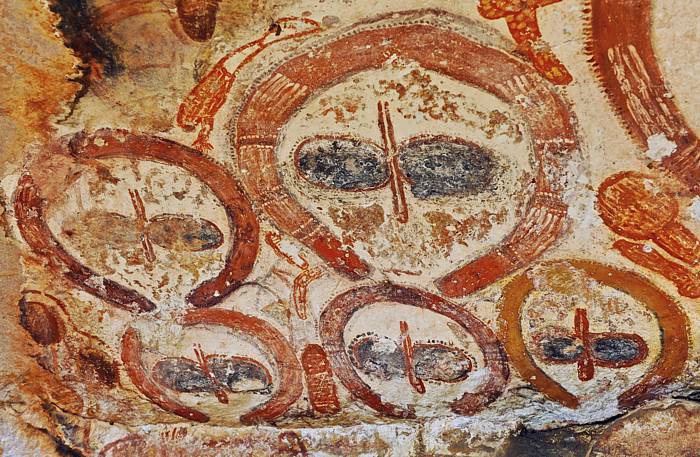
Aboriginal Rock Art - Wandjina Heads
King Edward River Crossing, Kimberley, Western Australia
The Wandjina are always portrayed with large dark eyes, each suggesting the eye of a storm. The line between them, which is often mistaken as a nose, is a power conductor. It is said that the Wandjina are so powerful that they do not need a mouth to communicate, and if they did happen to possess one, the rain would never cease and the entire land would be flooded.
Wandjina figures can be depicted in several different ways - sometimes as full figures filled with dots or dashes that represent rain - sometimes with only their heads and shoulders visible, suggesting that they are enveloped in a cloud moving across the sky - and sometimes they are seen wearing flashing headdresses that represent lightning. They are often painted in groups of three, representing the Ngarinyin, Worrorra and Wunambul people - the three language groups of the Mowanjum Community.
Aboriginal Rock Art Materials
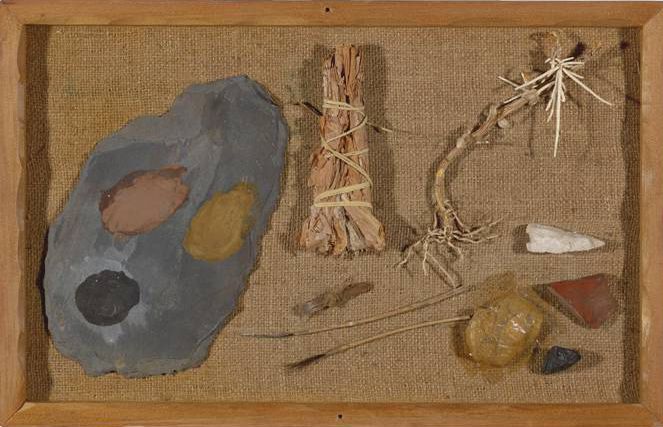
Aboriginal Rock Art Materials
The colors for a traditional Wandjina painting, like most indigenous rock art, were ground from natural pigments: black from charcoal, various reds from iron oxides, and browns, ochres, creams and whites from different colors of clay. They are collectively called 'ochres'. These finely ground pigments were then bound with water, saliva, egg white or animal fat to create a fluid paint. The brushes used to apply the paint were made from chewed twigs, reeds and animal hair.
Unfortunately, most of the paint used was water soluble and consequently the majority of Aboriginal rock art, which was never meant to be permanent, was washed away by the driving rain. It is only those paintings that were sheltered by caves or overhanging rocks that have survived.

